The search mask is the key to "understanding chess"
1. The search mask
The search mask only works for databases that are stored on the hard disk. Open the database and start the search mask with the shortcut Ctrl+F or via the menu with "Home-Filter List".
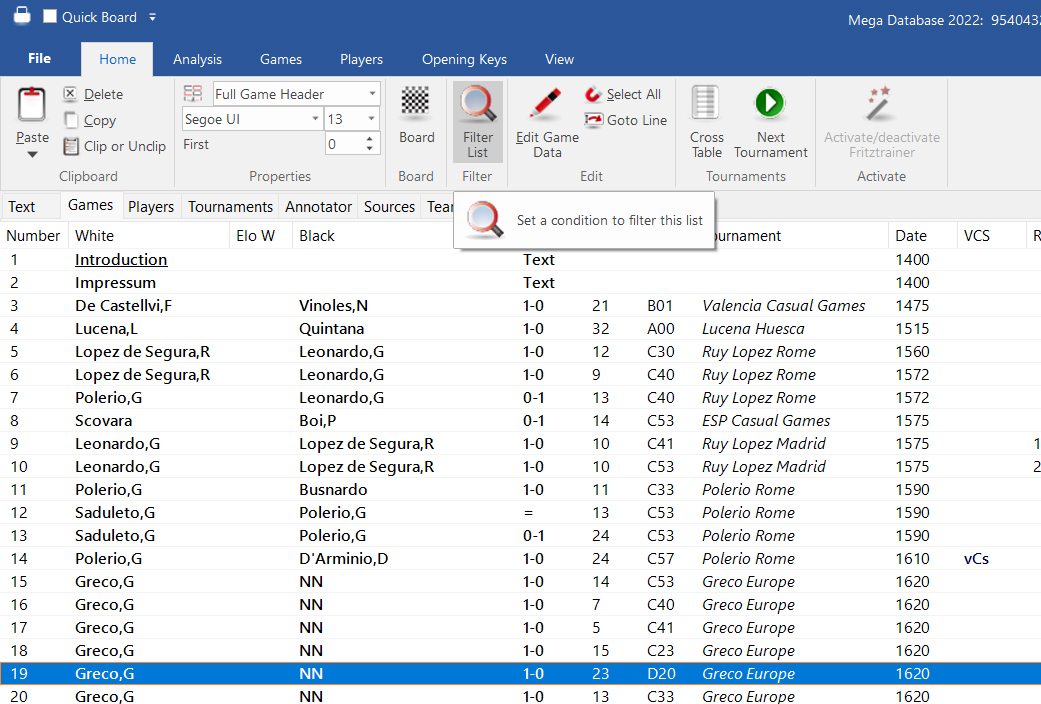
Filter list
The start window of the search mask appears on the screen, where the search can be defined.
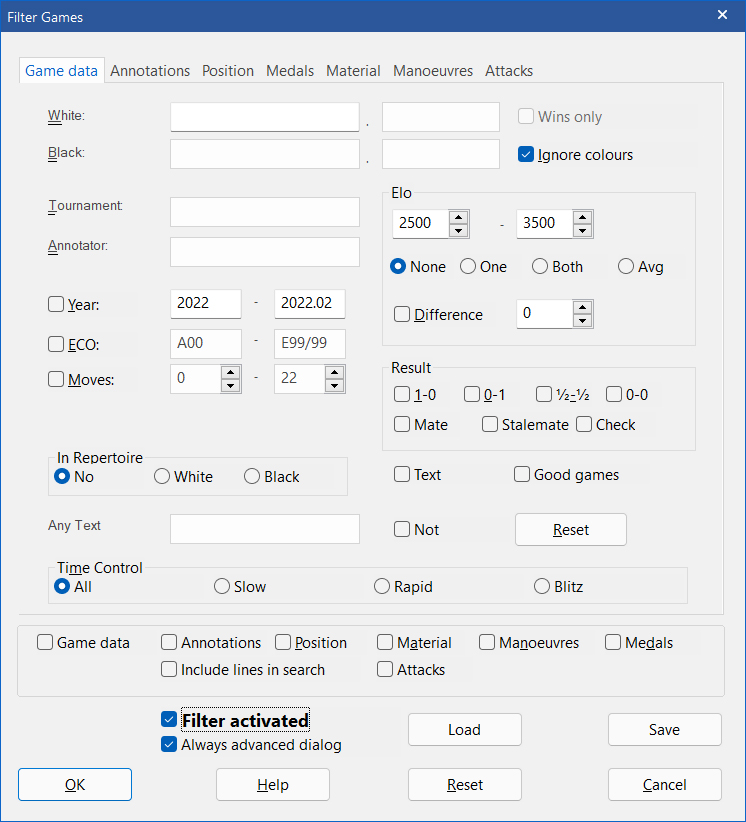
The starting window of the search mask
As we want to search for positions with an isolated queen pawn, we are particularly interested in "Position", "Material", and "Manoeuvres":

2.Searching for patterns
First we work with the search board. Here, the position of the individual pieces is positively defined. The search function therefore only takes into account games in which the given specifications (exact position of the pieces, moves, etc.) are fulfilled. Whether, where and which other pieces are still on the board is irrelevant for the search function. We search for positions with a white pawn on d4 and black pawns on f7, g7 and h7.
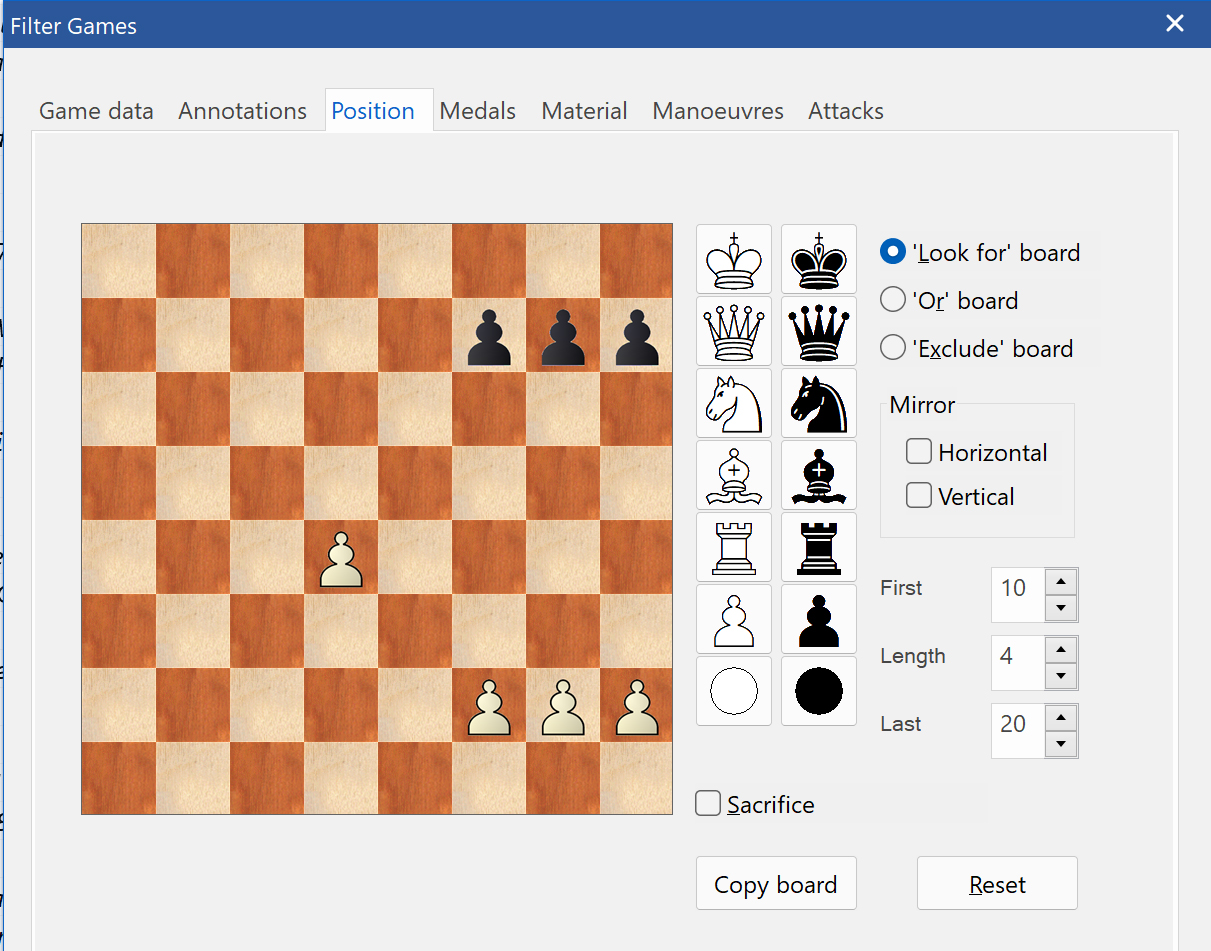
Search board
The programme saves the defaults for the search board and offers the possibility to refine the search with the "Or" board. In the example, only games in which the white king is on g1 or h1 and the black king on g8 or h8 are considered.
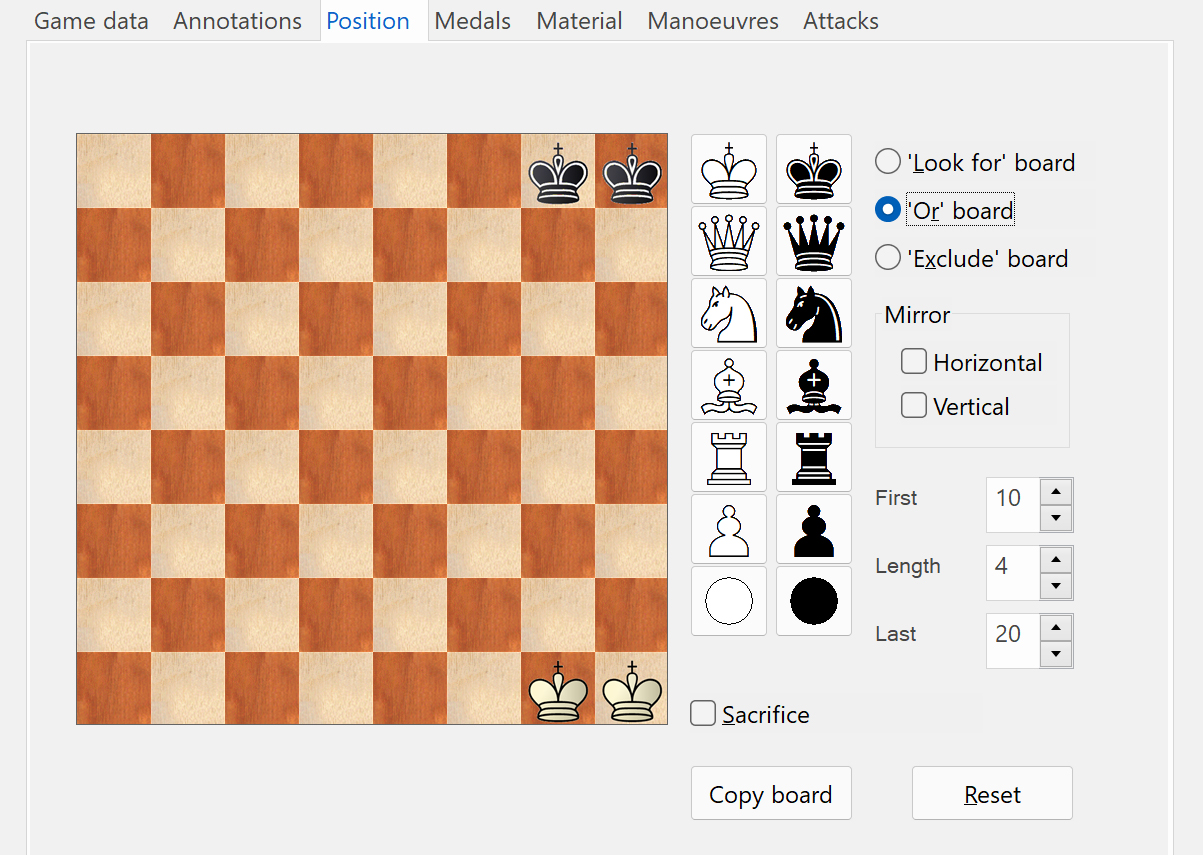
"Or" board
The next step leads to the "Exclude" board. Here the programme will only consider games if the given pieces are not on the given squares. In the example, no white pawn may be on the c- or the e-file. As with the "Or" board", it is possible to assign several pieces or even a white or a black point to a square. A point means that no white piece or no black piece may be placed on this square.

"Exclude" board
We also specify that only games in which the structure we are looking for is on the board for at least four moves between move 10 and move 20 are taken into account.
In this example, the search result led to the following game list (only ELO 2650+ and year 2021 -> game data):
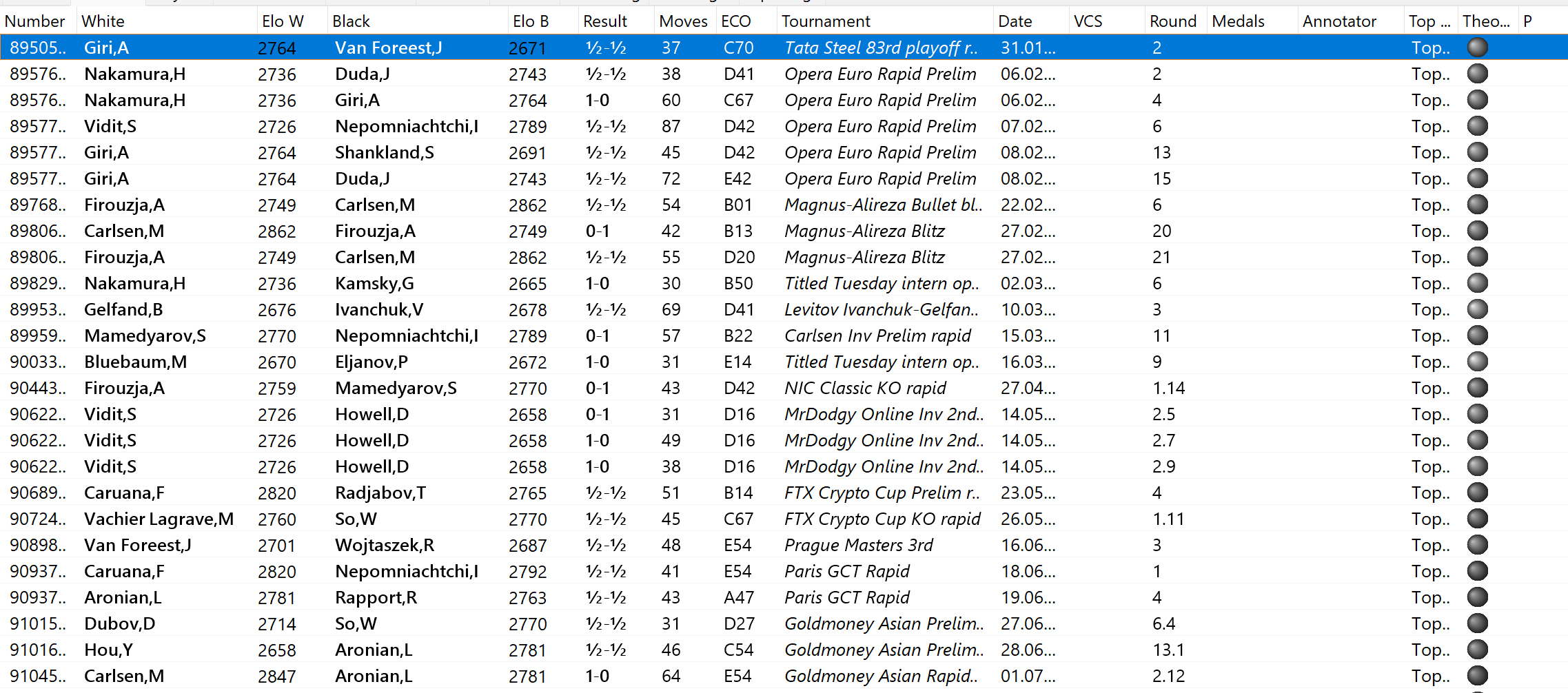
Game data
If I click on a game, the game opens to show the position that meets the search specifications. So I can quickly and easily check whether I actually have games with the isolated queenside pawn.
Important:
Adjust your expectations! The search mask will rarely return only interesting matches. But the number of games to be looked through is reduced to such an extent that it is feasible to look through the list of hits for interesting and suitable games.
Once you have obtained a satisfactory search result, it is advisable to save the settings as a "search" in order to carry out the same search at a later date, possibly for a different database, or to use the search as a basis for further investigations by adding further search criteria. For this purpose, there is the command "Save" at the bottom right of the search mask and the command "Load" for calling up these saved search settings later.
3.Searching for material constellations
The search created and saved in this way can later be supplemented by further searches, for example by defining material constellations. These searches can also be carried out independently.
In the example, we extend the search for positions with isolated queen pawn by the criterion that only heavy pieces should be on the board while material is equal. To start a corresponding search, first start the search mask, then click on "reset" (to set the search mask to zero) and then load the search for the isolated queen pawn. Since the material constellation usually appears in a later game phase, the white and black h-pawns should each be deleted in the "search board".
Next, call up the "Material" feature. For the required search settings (heavy pieces, material equality) the setting can look like this:

Since both sides should be materially equal, one can ignore colours and choose difference. Then the material constellation is not defined for White or Black (which is also possible) but one side has a queen, the other side is neither a queen up nor a queen down. The same applies to the rooks. In our example, there are no light pieces on the board, expressed by the zero. The king and the three heavy pieces together give a maximum of four pieces.
4. Searching manoeuvres
It is also possible to search for specific manoeuvres, or several manoeuvres in a specific order. To do this, open the Manoeuvre feature and define your manoeuvre in the search mask.

For the definition of the search for a specific manoeuvre, it should be noted that the designation of the figures is always done by English abbreviations.
First one chooses whether the manoeuvre is to be executed by White or Black or whether it does not matter. Then the executing piece is determined (Rook=R), then the starting square, using a question mark if it is not a specific row or line.
The target square is defined in the same way and then it is defined whether an opponent's piece is captured or not.
To refine the search, the opponent's response move is defined. If several moves are defined, make sure that the programme takes into account the order of the manoeuvres if necessary.

Defining the search for manoeuvres
The above explanations give only a small insight into the possibilities of the search mask to outline what ChessBase can do. If you would like to use the search mask more intensively, use the detailed help function and simply try it out. It will be worthwhile and fun!
If you have questions, do not hesitate to contact Martin Fischer: martin.fischer@chessbase.com
Links

































